News
7 Dec 2021
NW Group at the Games of the XXXII Olympiad
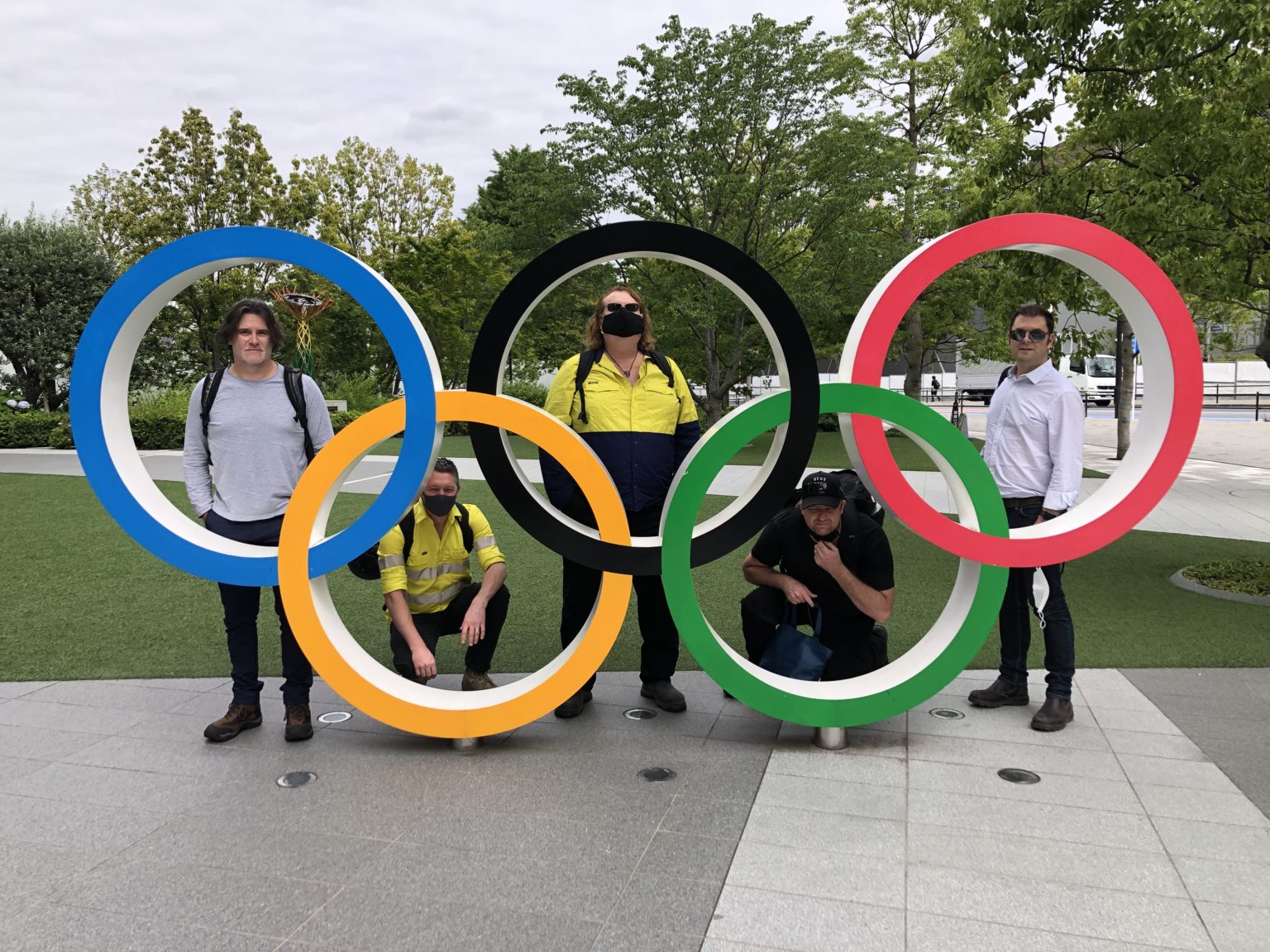
Subscribe to CX E-News
(Pic L-R: Steve Caldwell, John Watterson, Ian Shapcott, Chad Lynch, Ian Cooper)
NW Group are no stranger to the Olympic Games. Tokyo 2021 (or 2020, it’s confusing) marked the company’s fifth Summer Olympiad, with the Vancouver Winter Olympics in 2010 also under their belt. Of course, this one was a little different…
Partnering with local suppliers Hibino Sound and working under the aegis of producers Dentsu & Denstu Live, NW flew a crew of seven straight into two weeks of hotel quarantine back in May before embarking on almost two months of prep and rehearsals before the opening ceremony on 23 July.
“We met the crew from Hibino Sound back at the Rio Olympics in 2016 and have developed a great working relationship,” says Andrew Marsh, Director of Special Projects at NW Group. “They had a pre-existing relationship with Dentsu & Dentsu Live, and while their capabilities are exceptionally strong, an Olympic Ceremony is different, and this is where we come in. This came down to redundant large scale audio transport and IT networking solutions, RF management, timecode generation and distribution, amongst other things.”
Hibino contracted NW Group to handle all these specialist requirements. Working on the opening and closing ceremonies of both the Olympics and Paralympics, NW Group brought the specialist equipment that the major global event would need; custom RF antenna distribution designed and built by NW’s Steve Caldwell, IEM amplifiers, Pyramix replay systems, networking gear, and “a load of Optocore,” according to Andrew.
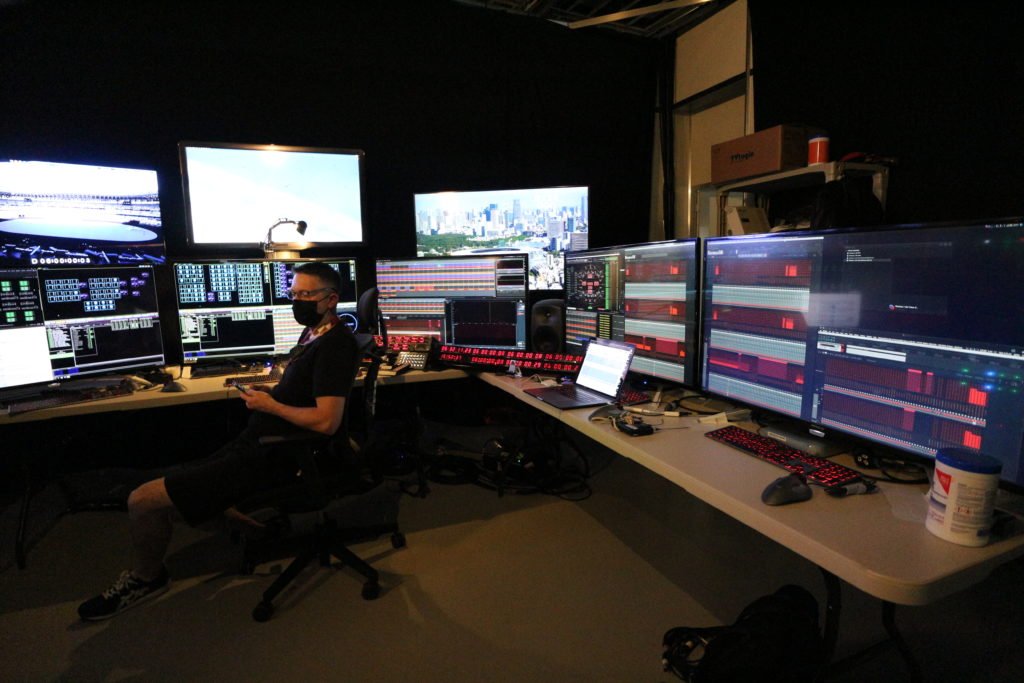
John Watterson in the audio patch control room 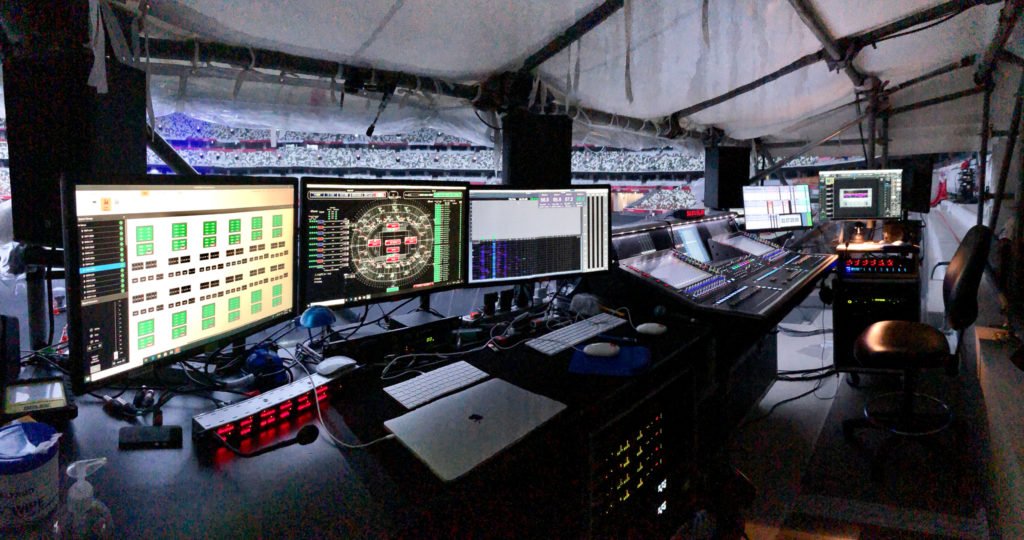
FOH Mix position.jpg 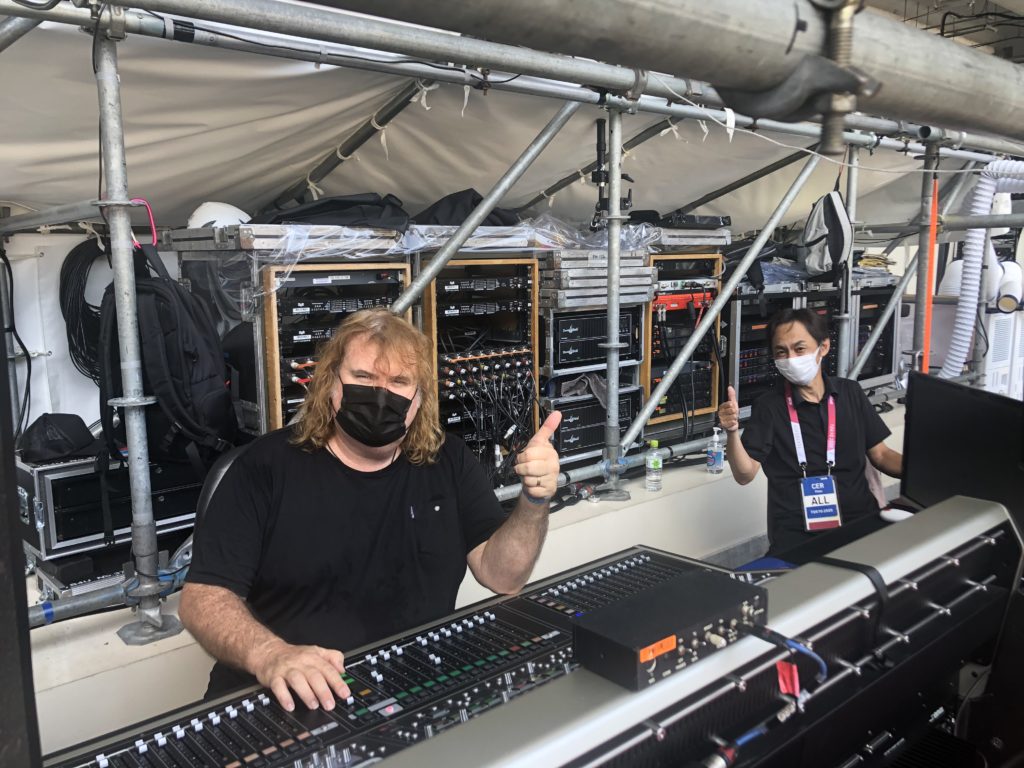
Ian Shapcott and Yoko
Getting Enough Fibre?
According to Optocore itself, “The Tokyo 2020 Summer Olympics Opening and Closing ceremonies almost certainly represented the largest deployment of Optocore audio network devices ever seen.” It’s hard to imagine a bigger system being deployed anywhere, for anything. “Part of the reason it was so large is that we’ve moved from running an analogue backup to implementing a second backup Optocore network,” explains Andrew. “The two systems are identical, both fully redundant and discrete rings. So if there’s a problem with the ‘A’ system, we’d switch to the ‘B’ and it would be exactly the same. The fibre loops also connect the audio LAN, which through a network of around 50 switches, provides monitoring and control of everything from radio mic and IEM units to amplifiers and uninterruptible power supplies, even the colour of a timecode display on the other side of the stadium. ”
With two systems of 21 nodes, additionally utilising Optocore’s SANE functionality, the correct connection is never far away. “The heart of our Optocore network is the M12-BNC MADI switch,” says Andrew. “The ecosystem is just getting better and better. Since the initial M12 release in 2015 and the further addition of integrated SRC capability in 2020 we have been able to expand the capacity of our systems, and though the networks are getting bigger and more complex, being able to handle everything within Optocore means they’re also simpler and more robust.”

Optocore M12-BNC 
One of the M12-BNC’s main roles was to get signals in and out of the multiple DiGiCo consoles on the job, which included main and backup SD5s at FOH. “The SD5s were completely full,” observes Andrew. “There were up to 64 playback lines, then there were 32 radio mics, including shout and choreography. With dual RF receive locations at FOH and on the field of play, you double the amount of RF input channels too. Then you still have to fit in everything else you need to make a ceremony work. Getting the audio for the ceremony to the world was also achieved with Optocore via nodes placed across the road in the broadcast compound and connected with 1km fibre cables. Optocore really does enable us to do things in much better ways than before.”
Keeping Time
One of NW Group’s major responsibilities was to create and distribute timecode safely to everyone. As it was running the whole show, there was a lot riding on it. “We worked very closely with the creative team,” relays Andrew. “Our replay team deals directly with the music department and anyone providing audio or video content. We then stripe those tracks with timecode that we play out to everyone via Pyramix. During rehearsals, If the stage manager wanted to make changes to timings, we were involved in the conversation. There was a long rehearsal process that we helped with, making sure everyone had the right rehearsal files to play off their laptops. Given how integral timecode is to the show, we ended up being closely involved with all departments, including choreography, stage management, and music teams, as well as the overall tech director for Dentsu.”
Timecode was run in the standard Japanese video format of 29.97 drop frame, which is the spec all content was created to. “We worked closely with the video team, which included Panasonic and ETC from France, who we’ve done many ceremonies with,” outlines Andrew. “The video crew had the greatest need for specific things to happen to timecode, and we also ensured it got to broadcast safely.”
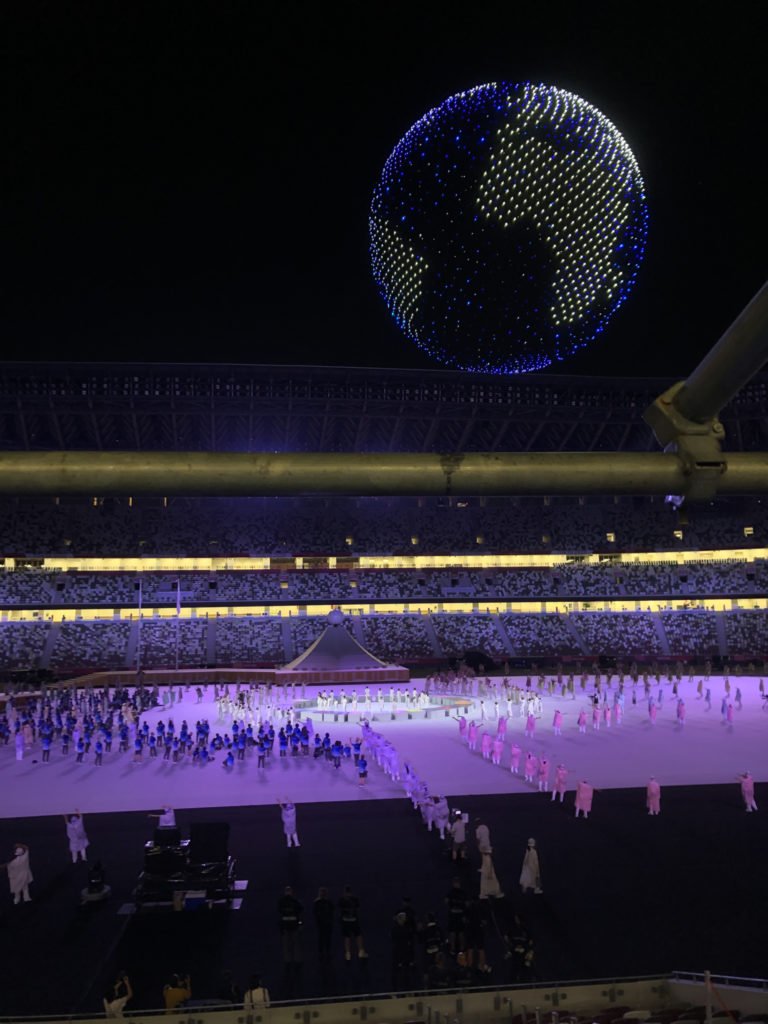
Opening Ceremony 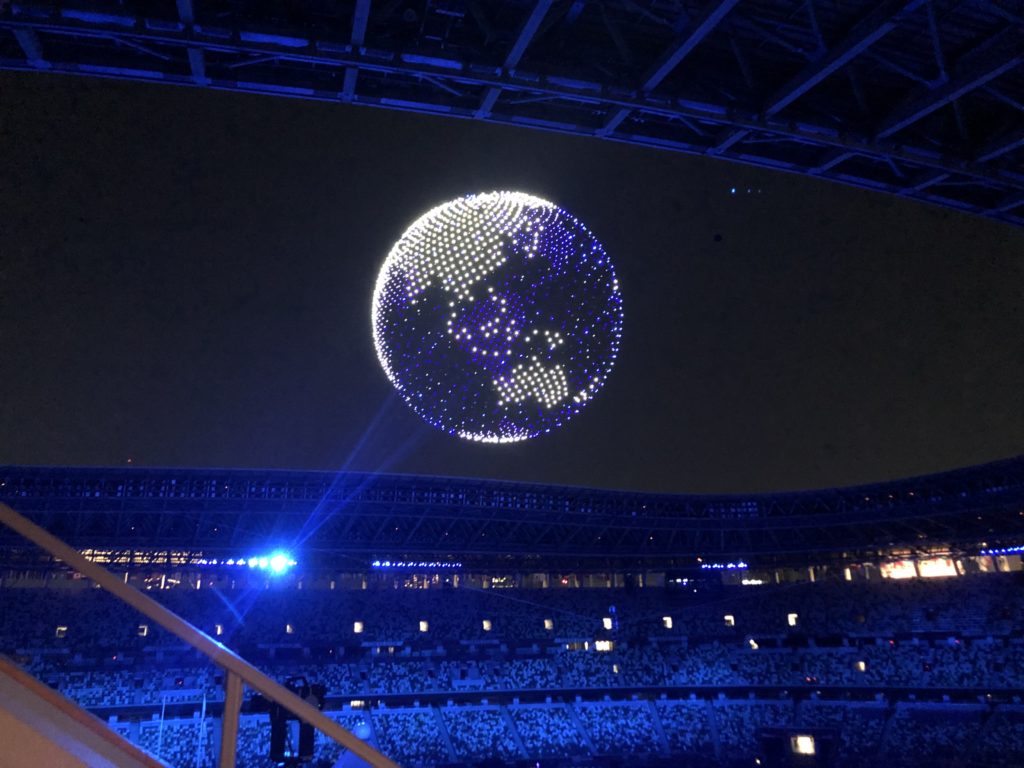
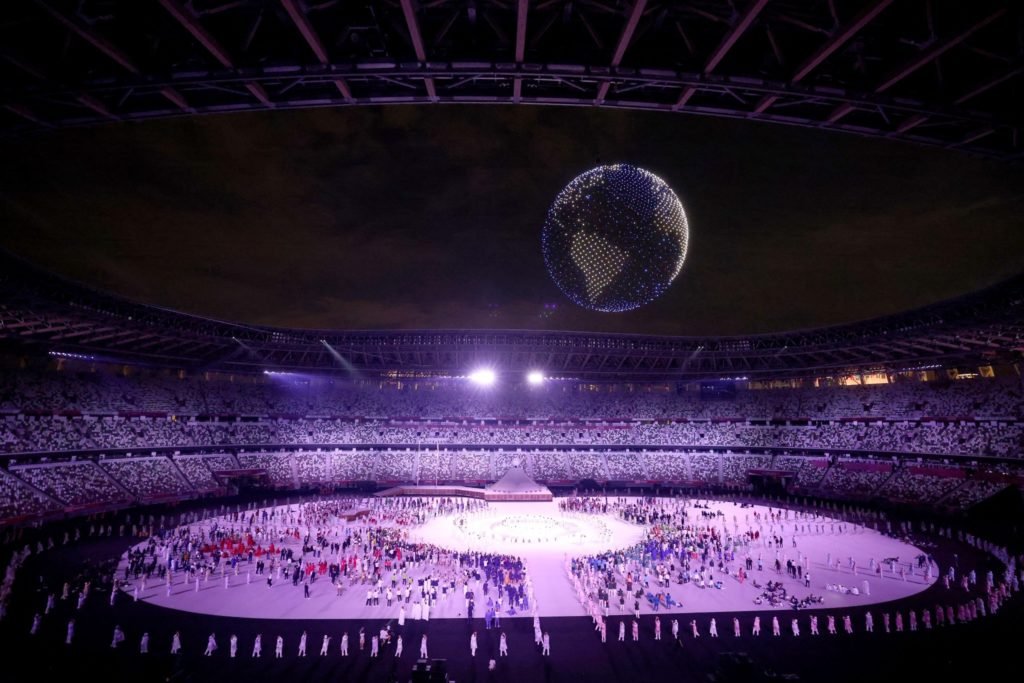
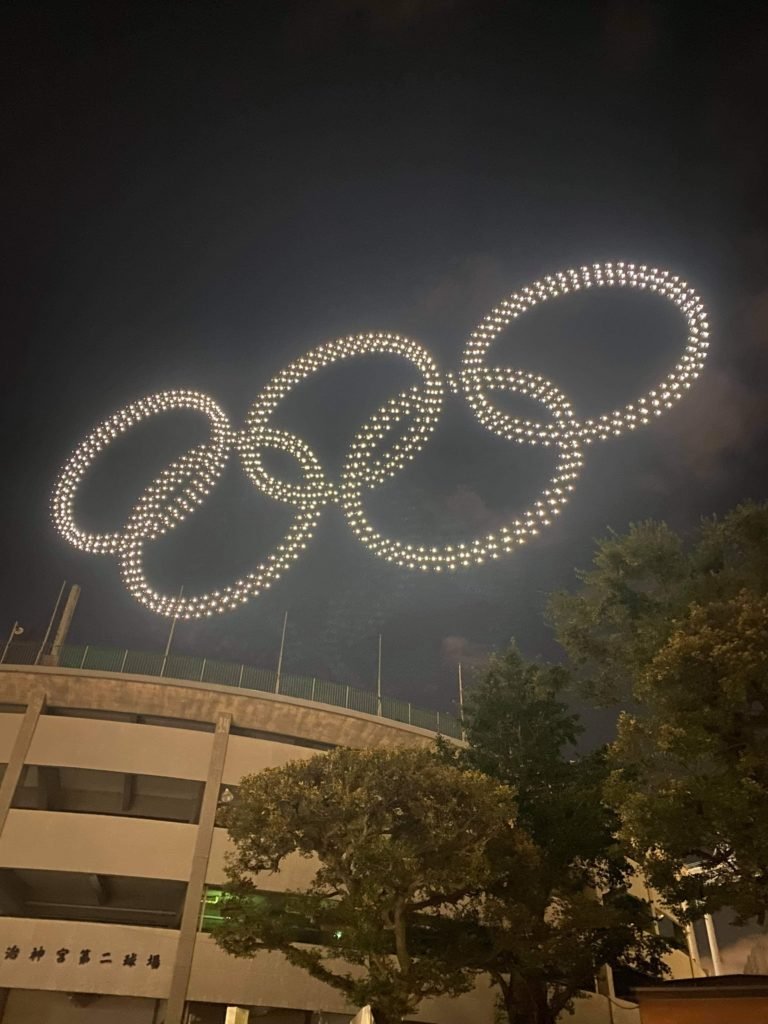
On The Air
Andrew describes the RF environment at Olympic Stadium as “Busy, but well-regulated. It was all about carving out space between TV channels. Our RF Engineer Steve Caldwell had many meetings with the RF coordination team about spacing and acceptable intermodulations, explaining why we grouped things the way we did. For monitoring, we were running 24 channels of IEM, using RF amplifiers designed and built by Steve. They transmitted eight frequencies each, and can be linked together with a failover mode to provide full redundancy.”
The Pandemic Olympics
And of course, there was COVID to deal with. “Apart from quarantine and regular mandatory testing, COVID didn’t really make the job any harder,” admits Andrew. “Having no crowd at the ceremonies, which we only found out was the case after we set up, didn’t really make a difference either. We just tailored the PA to suit while still providing atmosphere for the small audience of family members, VIPs, and athletes. I’m happy to report, all four ceremonies went well, with smooth sailing for the NW Group team.”
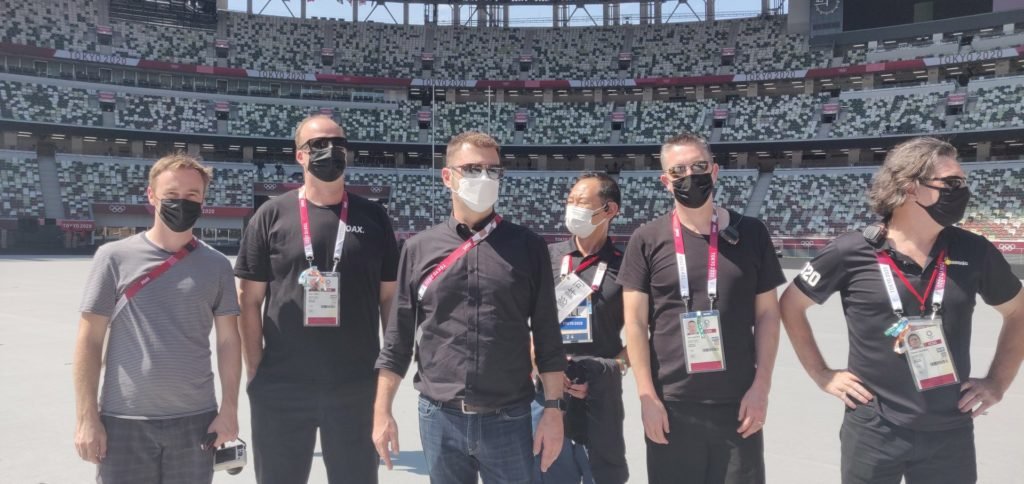
Crew
Andrew Marsh
Project Manager/Network designer
Ian Shapcott
FOH Engineer
John Watterson
Patch/Optocore Network Engineer and designer
Chad Lynch
Patch assist and monitor advisor
Steve Caldwell
RF Engineer
Ian Cooper
Replay Engineer
Alana Sentinella
Replay Engineer 2
Equipment NW Group provided to Hibino Sound
• Dual 21 node Optocore networks – M12, X6R-FX, DD4MR, DD32R, X6R-TP
• Audio LAN Networking
• Computers for audio equipment control
• Full UPS power backup for Norwest and Hibino equipment
• Multitrack MADI recording
• Pyramix Replay Systems
• QLab SFX replay systems
• Rehearsal QLab systems
• Custom radio mic distribution and antenna systems
• In Ear Monitors and custom RF amplifiers
• Custom lectern microphones with RF backup
• Timecode distribution and readers
• Time of Day distribution and readers
• Control room monitors
• Feeds to broadcast including sample rate converters
Optocore solutions are now distributed in Australia by CMI Music & Audio: cmi.com.au
Subscribe
Published monthly since 1991, our famous AV industry magazine is free for download or pay for print. Subscribers also receive CX News, our free weekly email with the latest industry news and jobs.




